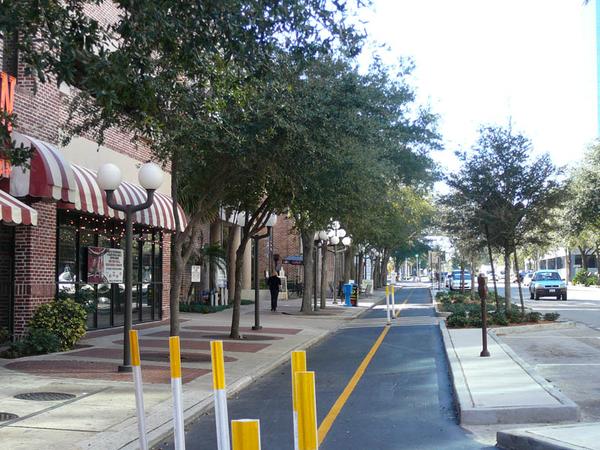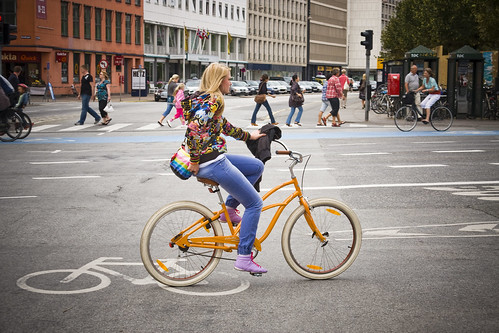Segmenting and rethinking bicyclist behavior and the supports necessary to increase bicycling
(Looks like I found some more stuff to read...)
The Tyee, the alternative weekly in the Vancouver, BC region, has a series of stories on Portland, Oregon, because there are people who believe that Portland has some things to teach Vancouver about livability. (Note that Vancouver is considered a well-planned city, especially in terms of adding high rise housing combined with community amenities.
This article, "Portland's Bicycle Brilliance: And what Vancouver can learn to create a self-propelled culture," is about Portland's bicycling environment, and there is a section about the demographics of bicyclists. It turns out people like me willing to ride in bad conditions (i.e. on very busy roads like US 1 towards College Park or on North Capitol north of Michigan Avenue) make up about 1% of the population.
From the article:
Four cycling personalities
In the early 2000s, Geller sat in his office in the Portland department of transportation thinking hard about the demographic of bikers in the city. He developed a theory, later backed up by research at the Portland State University, that broke them into four separate groups.
On one end sits No Way No How, the one third of the population who has no interest in biking whatsoever. Maybe they'll take a ride on a weekend through the park, but even in the best of conditions they probably won't bike on a regular basis. They just don't want to.
Then you have the Enthused and Confident, not quite kamakazis, but close. These are the roughly seven per cent of people who will bike in the city where it's relatively safe, relatively comfortable, if not a little unnerving for the average person.
Above them, on the extreme end of the spectrum sit the Strong and Fearless, perched on their bikes in the pouring rain, in the middle of the street, ready to go. They represent almost nothing, maybe one per cent of the city's population, the bike couriers and other kamakazis who will bike anywhere, anytime, now matter how dangerous or poor the conditions.
And everyone else? They're the Interested but Concerned, the other 60 some-odd per cent of the population with a rational fear of cycling in the city. They like the idea of cycling, they know it's good for their health, and for the environment, but they only want to do it if it's as safe and comfortable as their ride in a car or bus. And these are the people that American cities, Portland and Vancouver included, need to aim their bike infrastructure at, Geller argues.
"They're the people in the Netherlands who are riding," says Geller.
What would Vancouver need to appeal to these people? I asked.
"Better infrastructure," says Geller. "So the network is more complete. Most of our network is on street. It takes you where you need to go. Paths are wonderful, but they've got to be integrated with a good on-street network."
Admittedly, he also says bike lanes aren't enough for most of this group. Further separation, like buffered bike lanes, or separate cycle tracks (like the three glorious blocks of the Carrall Street Greenway Vancouverites are taunted by) are ideal, but a bike lane is a start.
Tinkering for the timid
Ultimately the concept is what really matters: More than 60 per cent of people who inhabit our cities are damn scared of cars, and if you want to get them on their bikes, you need to put as much space between them and traffic as possible. ...
Even further than that, Portland contracted companies like Alta Planning to blitz neighbourhoods and give out any information residents need to make them more comfortable on their bikes, conducting guided bike trips, and information sessions.
To summarize:
.33 of the population has no interest in bicycling
.01 of the population will ride anywhere/anyhow
.07 of the population is pretty willing to ride, sees it as a reasonable option
.59 of the population are willing to think about it and maybe do it, if there is supportive infrastructure--physical as well as help--and a network of infrastructure that makes bicycling safe.
In a comment on the entry "Bus driver experiences "windshield perspective"" in Greater Greater Washington, JTS provides a number of links showing particularly good examples of separated bicycling infrastructure, where he wrote:
So, bike lanes!! (Slow day at work) Look at how all of these streets are free of bikes!! Cars can ride together unimpeded by pesky cyclists.
1. Kobnhavn,(2), (3, note that it is plowed and adjacent to BRT),(4)
3. Paris, (2), (A Bus-Bike Lane, the way 7th Street NW must look to be effective)
Can DC DDOT bigwigs reading this thread want to take these for a frame of reference from now on, please? please? (shot taken on G St NW)
The St. Petersburg, Florida image JTS found for us shows that this can be done in the U.S. without society breaking down and coming to a halt.
Of course, it's not just a matter of building such infrastructure, we need to have the supportive programs in place to help the 59% of Americans who are willing to ride but need help to get there.

Image from Copenhagen Cycle Chic.
Speaking of promoting the self-propelled culture, see:
-- Momentum - The Magazine For Self Propelled People! (subscribe to it and ask your local bicycle shop to sell this magazine -- most don't)
-- Making Cycling Irresistible: Lessons from the Netherlands, Denmark and Germany a paper by Professor John Pucher of Rutgers University, published in Transport Reviews and also this article from Momentum, "John Pucher – the Bicycle Scholar"
-- the past blog entry, Ideas for making bicycling irresistible in DC, which extends Professor Pucher's thinking to building a world class bicycling environment in Washington, DC
Labels: bicycling, transportation planning, urban design/placemaking



0 Comments:
Post a Comment
<< Home